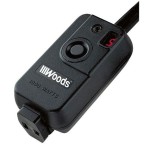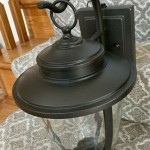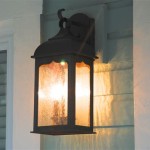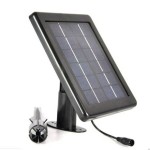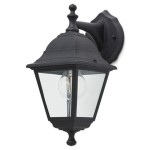How To Disable Motion Sensor On Outdoor Light
Outdoor lights equipped with motion sensors offer convenience and security by automatically illuminating your property when movement is detected. However, there may be times when the constant activation of the sensor becomes bothersome or undesirable. Perhaps a swaying tree branch triggers the light repeatedly, or you'd prefer your outdoor space to be unlit at certain hours. In such situations, disabling the motion sensor can provide a more peaceful and controlled lighting experience.
Disabling a motion sensor on an outdoor light is a straightforward process that typically involves adjusting the sensor's settings or physically disconnecting it. The specific steps may vary slightly depending on the type of sensor and the design of your outdoor light fixture, but the general principles remain the same. This article will outline the common methods for disabling motion sensors, providing you with the information needed to restore peace and quiet to your outdoor space.
Method 1: Adjusting Sensor Settings
Many motion sensors come with adjustable settings that allow you to fine-tune their sensitivity and response. By making adjustments to these settings, you can potentially reduce the frequency of unwanted activations or even disable the sensor altogether. The specific settings and their adjustments will vary depending on the manufacturer and model of the sensor. You may find a small button or dial on the sensor itself, or the settings may be accessed through a control panel or app.
Here are some common ways to adjust sensor settings:
- Sensitivity: This setting controls how easily the sensor detects movement. Lowering the sensitivity can make the sensor less likely to trigger from slight movements or background noise.
- Time Delay: This setting determines how long the light stays on after motion is detected. Increasing the time delay can prevent the light from turning off prematurely, reducing the frequency of activations.
- Range: Some sensors have adjustable range settings. You can reduce the range to limit the area the sensor monitors, preventing activation from objects outside your desired zone.
- Test Mode: Some sensors have a test mode, which allows you to temporarily disable the sensor while you make adjustments or troubleshoot issues.
By experimenting with these settings, you may be able to find a configuration that meets your needs. If the sensor still triggers too frequently despite adjustments, you may need to consider alternative methods to disable it.
Method 2: Disconnecting the Sensor
If adjusting the sensor settings doesn't provide a satisfactory solution, you can choose to disconnect the sensor completely. This method involves physically disconnecting the wires that connect the sensor to the light fixture. It's important to note that this approach will permanently disable the motion sensor, rendering it inoperable.
Here's how to disconnect the sensor:
- Turn off the power to the light fixture at the circuit breaker.
- Locate the sensor wires. The wires connecting the sensor to the light fixture are typically found within a junction box located near the sensor.
- Disconnect the wires from the sensor by carefully detaching them using a screwdriver or wire strippers.
- Cap the wires. After disconnecting the sensor, cap the open ends of the wires using wire nuts to prevent electrical shock.
- Turn the power back on and test the light fixture to ensure it is functioning correctly.
Method 3: Replacing the Sensor
If you're not comfortable disconnecting the sensor or if you want to retain the option of using a motion sensor in the future, you can replace the existing sensor with a standard light switch. This method effectively disables the motion sensor and allows you to control the light manually.
Here's how to replace the sensor with a standard light switch:
- Turn off the power to the light fixture at the circuit breaker.
- Remove the sensor from the fixture. This is done by loosening the screws holding it in place.
- Identify the sensor wires within the junction box.
- Connect the wires to the light switch. The wires should be connected to the correct terminals on the light switch based on the wiring diagram.
- Secure the light switch to the fixture and turn the power back on.
After replacing the sensor, you can now control the outdoor light manually using the light switch.
Disabling a motion sensor on an outdoor light is a relatively simple procedure that can improve your outdoor lighting experience. By selecting the method that best suits your needs and following the steps carefully, you can easily control the activation of your outdoor lights and create a more peaceful and comfortable environment.

How To Disable Or Remove The Pir Motion Sensor In Solar Wall Light Power Gen

How To Reset A Motion Sensor Light Lighting And Ceiling Fans The Home Depot

Motion Sensor Lights Tips To Reset Detector
My Outdoor Security Light Won T Turn Off George Brazil Plumbing Electrical Phoenix Az

How To Make A Motion Sensor Light Stay On Led Lighting Info

How To Disable Or Remove The Pir Motion Sensor In Solar Wall Light Power Gen

Hampton Bay 11 In Matte Black Motion Sensing Indoor Outdoor Led Flush Mount Ceiling Light Color Selectable 8 Pack 564281011fm 8pk The Home Depot

How To Reset Outdoor Motion Sensor Lights Electronicshub

How To Adjust Your Sensor Light Metro Electrical 24 Hour Electricians

How To Stop A Motion Sensor Light From Turning Off Rayzeek
Related Posts
